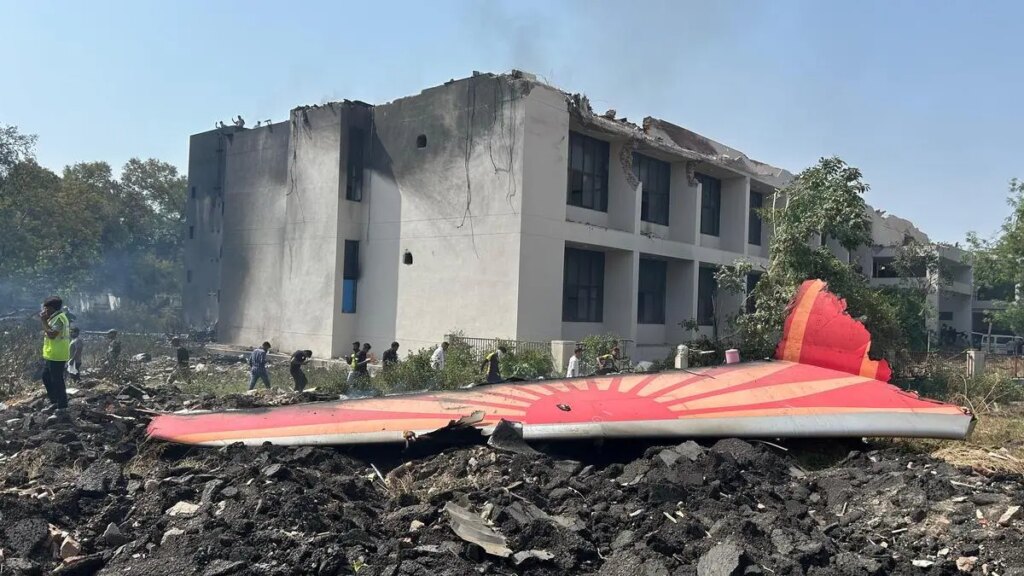On June 12, 2025, Air India Flight AI171, a Boeing 787-8 Dreamliner bound for London’s Gatwick Airport, crashed shortly after takeoff from Ahmedabad’s Sardar Vallabhbhai Patel International Airport. Piloted by Captain Sumit Sabharwal and co-pilot Clive Kunder, the aircraft issued a “Mayday” distress call moments before impact. It went unanswered by air traffic control. The fully fueled jet slammed into a medical college hostel, triggering a massive explosion and a fire that sent plumes of black smoke across the city.
This is the first fatal crash involving a Boeing 787 since the model began commercial service in 2011. The Aircraft Accident Investigation Bureau (AAIB) of India is leading the inquiry, with support from Boeing and General Electric, the supplier of the aircraft’s engines.
Air India’s fleet, history, and response
Air India, originally launched in 1932 by industrialist J.R.D. Tata as Tata Airlines, was nationalised in 1953 and returned to Tata Group ownership in 2022. Now headquartered in New Delhi, it operates a mix of Airbus and Boeing aircraft, including the 787 Dreamliner, used primarily for long international routes.
The airline has been trying to overhaul its image and operations under Tata’s leadership. New branding, a refreshed fleet, and service improvements were key to that effort. Yet, the company has also carried a record of inconsistent safety. A major accident in 2020, involving Air India Express Flight 1344 in Kozhikode, killed 21 people when the aircraft overshot the runway during monsoon conditions.
Also Read | Air India flight crashes in Ahmedabad minutes after takeoff, over 200 feared dead
Following the Ahmedabad crash, Air India grounded its entire 787 fleet pending investigation. Tata Group Chairman N. Chandrasekaran has also announced Rs. 1 crore compensation for each family that has lost a loved one in the crash.
Boeing’s troubled legacy
Boeing, founded in 1916 by William E. Boeing in Seattle, grew from a seaplane manufacturer into one of the world’s largest aerospace and defence corporations. It gained prominence during both World Wars through military aircraft production and later revolutionised commercial aviation with jets like the 707, 737, and 747.
The 787 Dreamliner, launched in 2011, was hailed for its fuel efficiency and long-range capabilities, thanks to advanced composite materials. It was designed to compete with Airbus’s A330 and A350. However, Boeing’s record over the past decade has been marred by crises that point to systemic failures in design, production, and corporate culture.
A string of errors
India has experienced multiple fatal Boeing-related crashes, including the 1988 crash of Indian Airlines Flight 113 near Ahmedabad, which killed 133 people due to pilot error and poor visibility, and the 2020 Kozhikode accident. These incidents spotlight persistent issues in pilot training and airport infrastructure.
Globally, Boeing’s credibility has taken repeated hits. The 2018 Lion Air and 2019 Ethiopian Airlines crashes, both involving the 737 MAX 8, killed 346 people due to the faulty MCAS software and Boeing’s failure to provide adequate pilot training. The incidents led to the global grounding of the 737 MAX for nearly two years. In 2024, Alaska Airlines Flight 1282—a Boeing 737-9 MAX—suffered a mid-air door plug blowout caused by assembly errors. These events have raised renewed alarms over Boeing’s quality control.
Even the 787 has not escaped trouble. A fire aboard a 787 at Heathrow in 2013, a sudden altitude drop on a LATAM 787 in 2023 due to seat failure, and recent whistleblower warnings about potential fuselage integrity issues underscore lingering problems. The Ahmedabad crash adds to this disturbing pattern.
A culture of compromise
The 737 MAX tragedies exposed flaws in Boeing’s safety culture. Investigations revealed that the company downplayed MCAS risks to expedite certification, sacrificing transparency and pilot training. Internal communications disclosed employees’ own concerns about compromising safety to meet deadlines and reduce costs.
Between 2021 and 2023, Boeing faced repeated delivery halts for the 787 due to assembly defects, such as improperly fastened fuselage components. A 2024 whistleblower alleged long-term structural risks to 787 aircraft, though Boeing denied any immediate threat. The FAA responded by stepping up inspections and enforcing stricter quality checks across Boeing’s production lines.
External factors have also added stress. The company has faced labour strikes, supply chain problems, and worsening trade tensions with China, which halted aircraft deliveries in early 2025. In April, Boeing CEO Kelly Ortberg declared 2025 would be a “turnaround year.” That optimism was short-lived. The Ahmedabad crash sent Boeing’s stock tumbling by over 8 per cent in US pre-market trading, while social media erupted with scathing criticism of the company’s safety track record.
Oversight and accountability
Boeing’s approach to safety inspections is multi-tiered, spanning design, production, delivery, and post-crash investigations. Aircraft like the 787 undergo rigorous pre-delivery trials and are monitored by FAA inspectors on-site. Yet, recent audits exposed documentation gaps and lapses in compliance.
Also Read | Plane crashes in peak holiday season bring back questions on airline safety
Training protocols have also come under fire. The MCAS system was barely mentioned in pilot manuals before the MAX crashes, highlighting a dangerous gap in both disclosure and instruction. Regulatory bodies worldwide have since overhauled pilot training standards, but public trust remains brittle.
Following the Ahmedabad crash, Boeing pledged full cooperation with the AAIB, particularly in examining the 787’s maintenance and mechanical systems. In the past, the company has responded to failures by issuing service bulletins and hardware updates, such as redesigned battery systems after the 2013 overheating incidents. But critics argue that these fixes often come too late, and the underlying problems—rushed development, cost-cutting, and weak regulatory accountability—persist.
Source:https://frontline.thehindu.com/news/air-india-flight-ai171-crash-boeing-787-ahmedabad-2025/article69688127.ece

